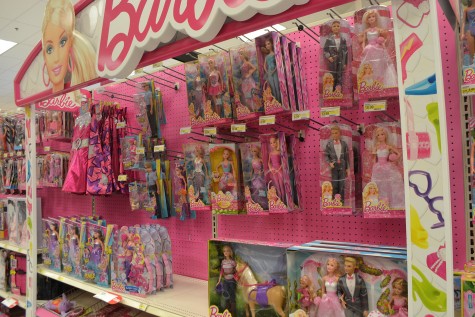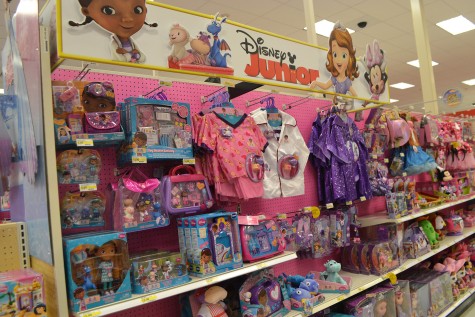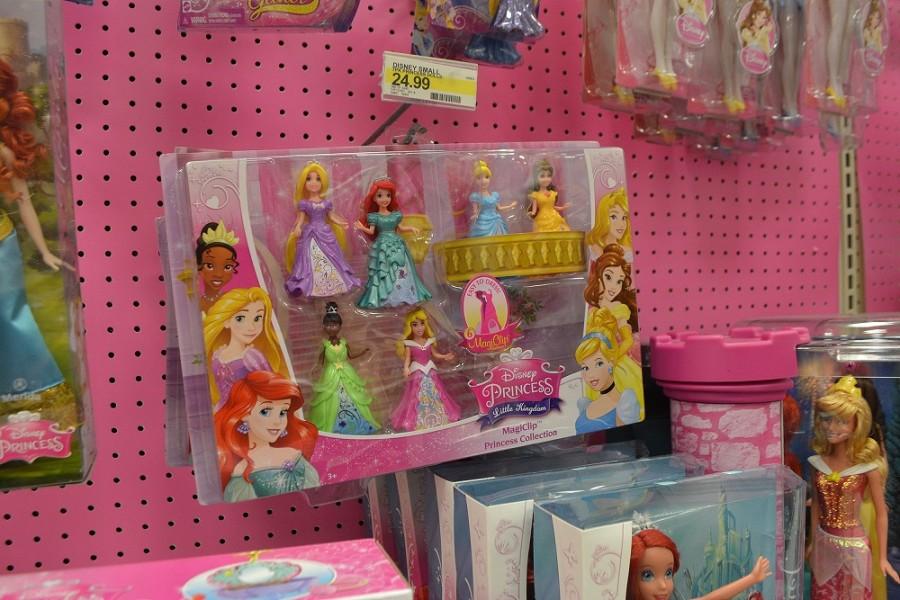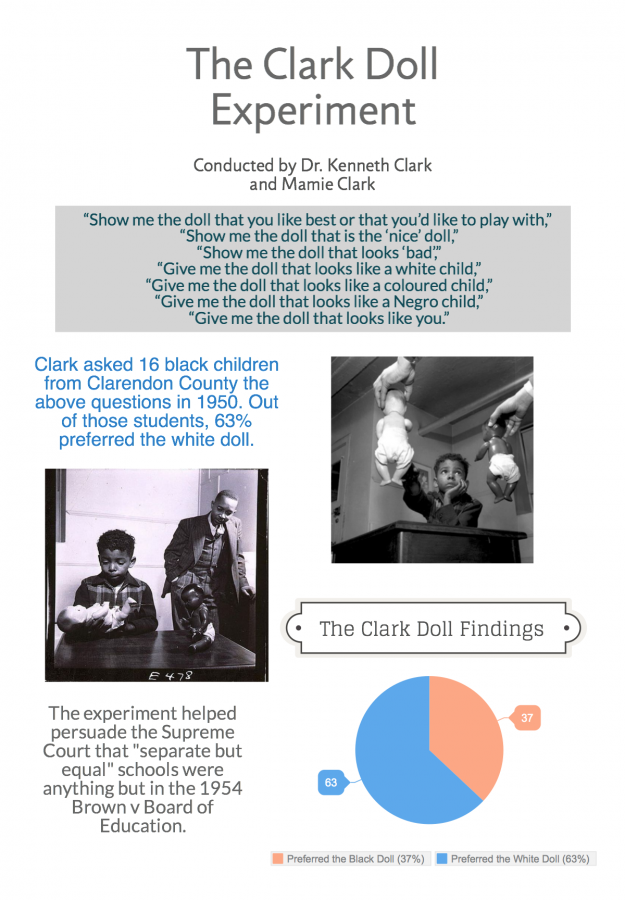Get it together, dollface: Dolls need diversification
May 11, 2015
Recently, American Girl retired a handful of their dolls, a necessary practice major toy companies participate in. However, consumers point out that the recently discontinued dolls include two racially diverse dolls, including a black doll and the only Asian doll. This highlights an overarching problem that most companies already have: a limited amount of racially diverse dolls on the market.
While American Girl offers the option to personally create a “just like you” doll, it also provides a range of historic dolls complete with their own stories. The company featured the retired dolls as sidekicks in the Historical Characters collection. The main collection will continue to include dolls of several races, including black, Native American, and Hispanic. However, the lack of an Asian American Girl doll demonstrates the idea that the dolls offered must reflect a better representation of the vast diversity that makes up America.
Although it may come across as an overreaction, especially when American Girl underlined its commitment to offer diverse dolls in light of this criticism, the recent events serve as a reason to point out this issue. Because of America’s ethnic diversity, doll companies should logically offer a wide range of dolls, including mixed-race dolls and with a variety of backgrounds.

Target’s Barbie aisle does offer a handful of black Barbies, however, the wedding Barbies on sale only come as the standard white Barbie and Ken. The brand also offers a brown-haired Barbie, perhaps enabling children of color to somewhat relate to the doll. Regardless, the selection fails to reflect America’s diversity by only offering a handful of ethnic selections.
In reality, companies like Barbie and American Girl regularly offer a variety of white dolls with various stories, while having the “required” ethnically ambiguous and black dolls.
Shanna Salcedo, a senior, mentions that “sometimes it’s hard to notice because it’s so normal in our society, but it is really surprising that most dolls are white, I mean, especially in America since there’s so many ethnicities. It doesn’t make any sense at all and I know it’d be hard to try to find a ethnic doll that isn’t Dora the Explorer.”
This reality negatively impacts children of color, as highlighted in The Clark Doll test conducted all the way back in the 1940s and repeated since with similar results. The Clark Doll test, conducted by Dr. Kenneth Clark and his wife Mamie Clark, focused on the impact of racist stereotypes and the self-esteem of children. The results of the study were used as evidence that school segregation negatively impacted the minds of young black children, causing them to internalize stereotypes and racism. This helped civil rights activists prove the practice of “separate but equal” unjust and against the law in 1954 Brown v Board of Education.
The experiment found that black children often chose to play with the white dolls more than the black ones. The children also gave the white dolls positive characteristics, while describing the black dolls in more negative terms. When asked to show the doll that looked like them, 44% said the white doll, but many of the children refused to choose. The results served as reliable evidence that black children dealt with the destructive impact of internalized racism through continued discrimination.
The Clark Doll Test remains socially relevant, even though many claim the stigma associated with the Civil Rights era has since long passed. Seventeen-year-old film student Kiri Davis of Manhattan’s Urban Academy repeated this study in 2005. Duplicated in Harlem, New York, the results remained unchanged, Davis’ findings showing that 15 of the 21 children surveyed preferred the white doll over the black one.
Interviewed by The Final Call, Julia Hare, a San Francisco psychologist, finds these facts unshocking: “If you keep doing what you have always done, you’re going to keep getting what you have always had. Our children are bombarded with images every day that they see on television screens and on coffee tables—either the light-skinned female that everybody is pushing or they give preference to the closest to White images.”
Good Morning America also repeated the experiment in 2009, and received slightly more hopeful results. 88 percent of the 19 black children, ages 5 to 9 years old from Norfolk, Virginia had no trouble identifying with the dark-skinned doll. When asked to identify the prettier doll, those who agreed both were pretty were interestingly the boys.
Harvard University professor William Julius Wilson told ABC News the plausible reason for the disparity between the girls and the boys, citing that “Black boys are more confident,” and “Black girls do not feel that they enjoy the respect and admiration that black boys do.” 47 percent of the girls questioned said the white doll was prettier.
“Black children develop perceptions about their race very early. They are not oblivious to this. There’s still that residue. There’s still the problem, the overcoming years, decades of racial and economic subordination,” Wilson explained.
The Clark Doll Test and the more recent repetitions illustrate the ill effects of stereotyping and racial segregation—whether actual school segregation or today’s socioeconomic segregations —on young children’s self-perception. Social scientists attribute these negative attitudes to continued discriminatory feelings towards minorities in our society, stemming from a long history of racist attitudes.
Because of that systemic racism in our society, less perceived racist actions, such as only including one or two non-white models in a fashion catalog or mainly white actors and actresses receiving an Academy Award, lead to internalized feelings of beauty and self-perception. People could argue these actions cause an equal amount of harm as the past “in your face racism.”

The Toy Emporium, subtitled “4 kids like me” aims to fill a gap in the toy industry by providing a wide, diverse range of ethnically conscious toys. Their selection includes Native American dolls, Biracial and Multi-racial dolls, and even a section dedicated to books about disability.
In erasing this harmful belief system, society must socialize children young in understanding culture, skin color, and beauty concepts. Nobody should remain “blind” to race and differences, and erase culture as a solution, but instead embrace those unique differences.
We should, for example, praise the famously diverse family of Angelina Jolie and Brad Pitt for their efforts to be culturally aware, especially when it comes to their diverse family. The widely published photo captured the couple’s biological daughter Vivienne carrying a black doll with short, tightly curled hair. While analyzing a doll may seem silly, dolls are an important source of concern when it comes to the self-esteem of girls, particularly young girls of color.
Dolls symbolize how children feel about themselves. Jeff Gardere, a child psychologist, explains that while black children playing with white dolls can have a negative impact on their self-esteem, when it comes to white children playing with black dolls, the opposite occurs.
Giving a white doll to a black child negatively impacts that child’s perception of their value, but give a white child a black doll and that white child grows more sympathetic to respecting black people in their lives. Kiky Etika, a junior, insists the same: “People underestimate the effect the media has on people, not just children. Who would think that the color of a doll’s skin could influence a child, but it does. I think as a society we need to focus on diversifying everything, not just toys, but movies and television as well.”
For the cultural majority, many find it disgusting that a child judges or even perceives the race of others, and maintain that providing culturally different dolls only enhances the difference between races. However, look down any doll aisle and the choices of a white babydoll trumps the amount of black babydolls, let alone mixed-race babies, Asian babies, or Hispanic babies.
The reality that most dolls manufactured today remain white, despite the fact that racial and ethnic minorities now make up 43 percent of the country’s population, creates a reason for concern. While doll manufacturers started diversifying their doll lines decades ago, that does not reflect the extent needed to represent America’s current diversity.

Optimistically, Disney Junior show Doc McStuffins stars a young black girl, bringing diversity into children’s television and therefore children’s toys. The show also encourages children, especially little girls, to aspire a career as a doctor; actually selling products that reflect that aim.
Viviana Rodriguez, a sophomore, wholly agrees: “Of course it’s racist, people like to think racism is over but it’s not. Even stuff like this, dolls, continue to show the racism that’s never left our society. It’s just more hidden, but if anyone paid attention and thought about discrimination and stereotypes all around in the media today, nobody could deny that racism is still around and disrupting people’s lives today.”
Multiple small-companies recently began popping up to fill this empty market that major toy companies have left. 4kidslikeme.com president Denise Gary-Robinson created her brand after experiencing continued trouble finding ethnically diverse dolls, a suprising relaity even in large, diverse urban areas. The website offers a wide selection of various ethnic dolls; it even includes Muslim dolls, Southeast Asian dolls, and dolls depicting mixed-race families. Hopefully this level of multi-ethnic diversity leaks over into the mainstream major toy companies, reflecting the wonderfully diversity America represents.
Since major companies set out to make money, they therefore reflect the culture of our society through sales. This overarching diversity problem in television, children’s toys, and even Hollywood shows that, while America may be the most diverse nation, the country still holds the racist attitude of white superiority.
Parents, teachers, and mentors can create the change needed by focusing on educating children in culture and diversity, creating a more accepting American way of life and ensuring a future of wonderful selections of all races, ethnicities, and cultures down every supermarket’s toy aisle.









